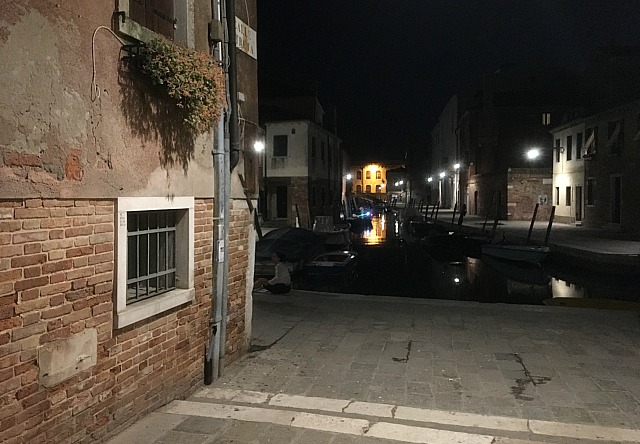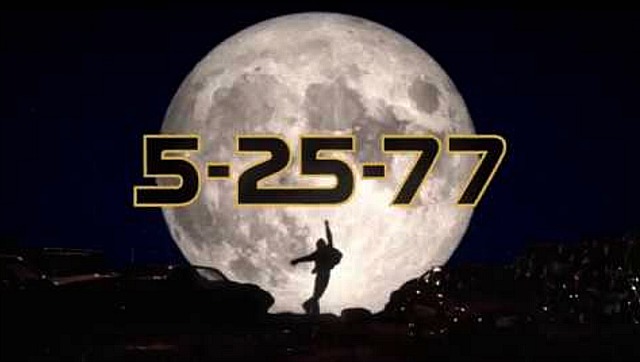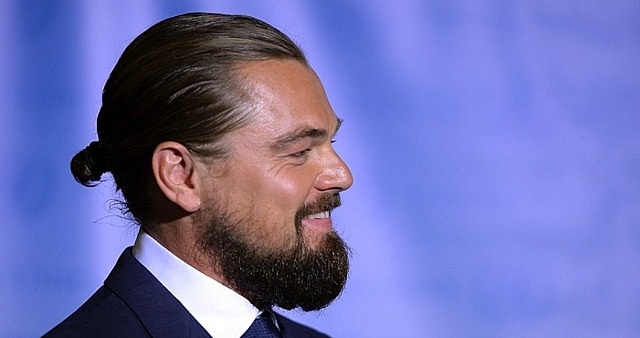I don’t know to put this exactly, but I’ve been a Cialis guy for several years now. Those little tan-colored pills fill me with compassion for all those 40-plus guys who had to make do on their own throughout history, going back to the Egyptians. Cialis is as vital to the rapture of things as cookies and cream gelato, a good film, a well-written sentence, a great joke, the wind assaultng my helmet as I’m running around on the Kawasaki, fresh-squeezed orange juice, chugging Perrier water after exercising, oxygen, jangly guitar chords, garlic mashed potatoes, the feeling of endorphins, etc. Even without the slightest expectation of romantic attention, I love the way it makes me feel like a coyote, like I’m 29 and running to catch a fly ball in center field. But last year I upped the dosage to 60 mg, and began to feel occasional Cialis heartburn. The sensation almost felt like a heart attack (or the way I imagined one would feel), but they went away after a minute or so. So I stopped with the 60mg and rolled things back to 20mg, and that was better. I don’t know why I just wrote this.
Daily
All Quiet on Fondamente de l’Arzere
There’s a soul-soothing atmosphere of quiet throughout the Dorsoduro and San Croce districts after dark. No scooters, no sirens, no thumping bass tones emanating from clubs, no half-bombed 20something women shrieking with laughter…just the barely-there sound of bay water lapping at pier pilings. There are many places, I’m sure, that are just as quiet when the sun goes down. But there are very few where you can’t hear hints of the far-away hum of civilization, where traces of the usual nighttime rumble aren’t at least faintly audible. I can sit at home in West Hollywood and feel cool and collected, but I’ll always hear the occasional helicopter or motorcycle whine or subwoofer speakers thumping in someone’s car or louche party animals roaming nearby. Venice is dead-mouse quiet, especially after 10 pm or thereabouts. You can hear a pin drop.



 Last night we tried some of the home-made pasta sold by this guy, and there’s a huge difference between it and the usual stuff you buy at Pavillions.
Last night we tried some of the home-made pasta sold by this guy, and there’s a huge difference between it and the usual stuff you buy at Pavillions.No Man Buns
Why grow your hair long if you’re just going to pull it back with a rubber band or velvet strap of some kind? If your hair is long, you need to rock that shit. Because man-buns are like…why? It’s like you were late for some black-tie thing and didn’t have time to style your Legends of the Fall hair or at least comb it out, and so you just tied it back and ran out of the door. In the spirit of “shit or get off the pot”, you need to either own your long hair or be a shorter-length guy. I’m talking to you, Emmanuel Lubezski. Because (a) there isn’t much difference between a man-bun, slicked-back moderate length hair and an Aaron Paul tennis-ball thing, and (b) man buns do nothing for the wearer. They make you look “hip” on a certain level, but also louche and indecisive and a bit scraggly. Joaquin Phoenix was wearing a man bun at the Cannes Film Festival awards last night. This plus wearing Converse lace-ups to the ceremony (what potential award-winner comes to Cannes without a pair of uptown shoes?) plus the pot belly thing….honestly, what a douche.


Political Agendas
Last night’s Palme d’Or win by Ruben Ostlund’s The Square, a dry, sharply-ordered satire of political correctness in Sweden (which I called “a serving of deft, just-right comic absurdity”), was fully deserved. I would have voted for Andrey Zvagintsev‘s Loveless, a brilliant missing-child melodrama that won high praise from nearly every Cannes-visiting critic, but it only managed a third place showing — i.e., the Jury Prize. This isn’t a tragedy (it was celebrated), but it wasn’t appropriate either. I blame the usual political agendas.

The Square director Ruben Ostlund at the conclusion of last night’s Cannes Film Festival awards ceremony.
The 2014 Cannes jury shafted Zvyaginstev’s Leviathan with a piddly screenwriting award, and now another Cannes jury has delivered a similar message. Loveless should have at least won the Grand Prix, but that award went to Robin Campillo‘s BPM (Beats Per Minute), a impassioned, seriously didactic period film (i.e., early ’90s) about Parisian ACT UP members battling bureaucratic indifference and/or foot-dragging in the battle against AIDS.
BPM is a commendable (i.e., thumbs up but less-than-great) film, but the Grand Prix win, trust me, was largely about jury president Pedro Almodovar pushing a film with a progressive gay agenda. Pedro wanted this and the jurors went along.
I’m also blaming the inappropriate Jury Prize win for the Zvyaginstev on the feelies — i.e., jury members who wanted to honor films that supplied up vibes and socially constructive messaging, which the gloomy Zvyagintsev film couldn’t quite accommodate. I don’t know for a stone fact that Will Smith was a prominent voice among the feelies, but how could I not at least suspect this? Look at the movies he’s chosen to do over the last 20-plus years…good God.
The impetus for handing the Best Director prize to The Beguiled‘s Sofia Coppola was, I’m guessing, almost entirely a progressive-female-agenda thing. (I don’t know that jury member Jessica Chastain was pushing for this, but it would have been odd if she’d been neutral…c’mon.) The Coppola trophy was almost certainly inspired by the fact that the last time a Cannes jury gave their Best Director trophy to a woman was in 1961, when Soviet filmmaker Yuliya Solntseva won for The Chronicle of Flaming Years.
I’m saying all this because The Beguiled is far from brilliant or audacious. It’s just a slightly better-than-decent remake of Don Siegel‘s 1971 original — nothing more than that.
Serious Commitment To Bloated Dad Bod Aesthetic
From Kyle Buchanan’s 5.27 Joaquin Phoenix interview, titled “Joaquin Phoenix Is an Action Hero Now, But He’s Keeping His Belly“: “Lynne Ramsay’s You Were Never Really Here is about a hammer-wielding, battle-scarred war veteran who rescues girls from a sex-trafficking ring, but you’ll know it’s different from a traditional action thriller as soon as star Joaquin Phoenix takes off his shirt.
“In an era where most leading men have awfully similar buff bodies, the 42-year-old Phoenix stands apart: His character is covered in scars, his pecs are hardly Hollywood-chiseled, and while the actor hit the gym every day to build strong arms for the role, he’s still got a notable gut hanging over his waistband. If there’s any six-pack in sight, it’s likely getting cold in the fridge.
“Phoenix is no stranger to rocking a dad bod onscreen, but this is something different — a rough-hewn physique that uses shirtless scenes to tell the story instead of simply serving as a glory moment for an actor’s vanity. Somewhat slimmer and clad in a dress shirt and tie, Phoenix explained to me today at the Cannes Film Festival (where You Were Never Really Here just premiered) how he conceived the character. ‘I thought he should be as big as possible, but I also didn’t want the standard Hollywood body for getting big,’ Phoenix said. ‘He’s somebody who’s mid-life and has kind of fallen off in some ways.'”
Nice-to-Genova Grand Prix
Yesterday morning’s high-speed journey along the A8 from Nice to Genova was brutal and tense and, by the end of the day, exhausting. 130, 140 kilometers per hour within three narrow lanes with no wiggle room or shoulders to speak of, and dozens of tight curves. I was Paul Newman at Lime Rock. The drive demanded every last ounce of focus and concentration and then some. I felt okay while it was happening (water off a duck’s ass), but our lives were on the line every second. Things ease up when you turn north at Genova and start heading toward Milano, Salo (location of the famous Pasolini debauch of ’76), Lombardy (the regional setting of Luca Guadagnino‘s Call Me By Your Name**) and finally Mestre, the little town outside Venice where savvy travellers park their cars. But between the A8 Red Bull anxiety drive and lugging 80 or 90 pounds of luggage over eight or nine Venice bridges in the mid afternoon, I was whipped by nightfall. I crashed early-ish (10:30 pm) and just didn’t have time to write anything.
“Such A Bizarre Universe…”
Two or three days ago Sony Pictures Classic’s Michael Barker introduced Indiewire‘s Eric Kohn and Anne Thompson as follows: “There is a real issue of the loss of quality in film culture. In this time of acceleration of technology where there’s a new discovery or a new technology every day, a lot of people are forgetting that we are losing major film critics who have guided us to the best films. We all have endless choices and a limited amount of time, and we need help. I need help, and I’ve been at this [business] for decades. Anne Thompson and Eric Kohn are the present and future voice of film criticism. They will help you decide what to see, and make you more of an informed viewer in this age. [And] we have to fight to keep them, as well as protect film culture so that [the good] films don’t get lost.”

Sweaty, Exhausted, Proud
We were loaded down with bags, and decided on the spur that shelling out 40 euros for a water-taxi to our rental (2290 Fondamente de L’Arzere) might not be a bad idea. Our landlady had told us, I mean, that it would cost 40 euros, but she was wrong. The thugs running the water taxi service told us (a) the price is 60 euros and (b) they would only drop us off at the San Basilio vaporetto stop. It was all I could do to restrain myself from taking a poke. We refused and humped it over on foot. Not easy when you’re lugging all that weight, but I felt good for not submitting. Hundreds of baaahing tourists go along with this extortion every day but not people of character and backbone.




Zvyagintsev To Fan
Whether or not Andrey Zvyagintsev‘s Loveless wins the Palme d’Or at the close of tonight’s Cannes Film Festival award ceremony, I’ll always have this gentle moment, which happened at the start of last weekend’s interview with the renowned Russian director. Tatyana, aka “SRO”, is a huge fan of Zvyagintsev’s Leviathan and Elena, and had given me a letter to show to him. I did so and then, in the manner of a typical Hollywood Foreign Press member, asked Zvyagintsev to please reply into my digital recorder. Here’s what he said.

Loveless director Andrey Zvyantsev during last
Rough, abbreviated translation: “Tatyana…thank you so much for your subtle and profound perception of art in general. I feel lucky you watched my films. The despair, hopelessness, desperation, reality and profound tragedy that you felt in the Loveless trailer…is exactly what I wanted to express in my film. You said you felt goosebumps when you watched the trailer. I promise you this will continue when you see the actual film. I wish you all the best and hope to meet you in real life some day.”
Better Left Unseen?
Patrick Read Johnson‘s 5-25-77, a flawed nostalgia flick that was shot 13 years ago (actually between ’04 and ’06) but has never been released, screened in 32 theaters last Thursday night to honor the 40th anniversary of the opening of Star Wars. It will likely stream on Filmio before the end of the year, I’m told. A friend who caught a screening at the Laemmle Wilshire shares the following:
“It’s a sweet film, and I obviously respect Johnson’s passion and perseverance. Is it unwatchable? No. But it definitely feels amateurish at times. Like a clever home movie. The Star Wars thing is really only half the movie but the point is that Star Wars could be a stand-in for anything. Whatever you’re passionate about and makes you obsess. Ultimately, the story just isn’t there though. I enjoyed myself [as far as it went], and admire the film as a labor of love, but you didn’t miss anything.”

From a director-screenwriter friend: “Well past the expiration date, just like Kyle Newman‘s Fanboys. Rob Burnett‘s Free Enterprise already nailed this culture. A friend pointed out how the 5-25-77 protagonist’s mother pours through American Cinematographer calling people in Hollywood to get her son a job. But it should’ve been him doing the calling. Too passive a character. That’s the real problem.”
Seagulls and Violins
The Sgt. Pepper 50th anniversary cash grab has begun. The actual anniversary is on June 3rd, which was the actual day of release in ’67. The remixed album is available on iTunes, and the six-disc CD package is being delivered to suckers as we speak. My cynical cup runneth over, and yet somehow this instrumental, vocal-free version of “She’s Leaving Home” got to me early this morning. The absence of Paul McCartney‘s vocal track brings Mike Leander‘s instrumentation to the fore, etc. You can say “aaahh, fuck all that and especially fuck the sentimentalists for this relentless Pepper shit,” but this is very nicely done. Really.
As Long As His Sins Allowed
The first Allman Brothers album hit on 11.4.69, and right away you had to give it up for vocalist and keyboard player Gregg Allman, who at age 22 had a beautiful bluesy, achey, gin-guzzly, gravel-gut voice that made him sound like some 48 year-old, self-abusing guy who’d lived through more than his share of hard times. That voice carried him for the rest of Allman’s life, and peace be to his soul for that. For that voice, along with brother Duane’s inspired guitar playing and the churning, pumping sound of the band itself, gave birth to Southern rock. As it must to all men death came yesterday to Greg Allman. He might have lived another 15 or 20 years had it not been for years and years of alcohol abuse, which of course led to liver cancer. All party animals pay the price in the end. But if the final measure is “quality, not quantity,” Gregg Allman lived a rich, abundant, at times ecstatic life. Cheers, respect, condolences, salute.





